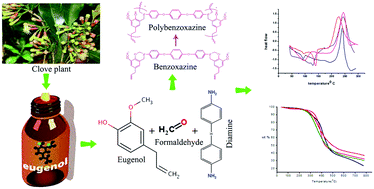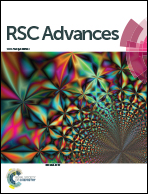Synthesis and characterization of novel bio-based benzoxazines from eugenol
Abstract
Polybenzoxazines are phenolic-like materials that possess dimensional and thermal stability, and they release no by-products during their polymerization. In this study, a new class of benzoxazine-containing monomers has been prepared from renewable resource (eugenol, a natural phenol obtained from clove oil), paraformaldehyde and various aromatic diamines. The structures of the monomers were supported by Fourier Transform Infrared (FT-IR), 1H-NMR and 13C-NMR spectral analysis, proving the existence of the benzoxazine ring containing eugenol moiety in its molecular structure. The monomers were polymerized/cured via ring-opening polymerization by heating as indicated by FT-IR and Differential Scanning Calorimetry (DSC). This is confirmed by the disappearance of the peaks due to oxazine ring (942 cm−1). The exothermic peak associated with curing was observed from 170 °C to 250 °C. The thermal and mechanical properties of the polybenzoxazines were investigated through thermogravimetric analysis (TGA) and dynamic mechanical analysis (DMA). The temperatures corresponding to 5% and 10% weight loss is from 240 to 295 °C and from 290 to 340 °C, respectively. The completely cured materials could achieve char yields up to 36.5% at 800 °C in nitrogen atmosphere. DMA revealed that the glass transition temperatures of PBz-SUL and PBz-PHE were higher than that of PBz-DDS and PBz-OXY.

- This article is part of the themed collection: Organic chemistry collection

 Please wait while we load your content...
Please wait while we load your content...